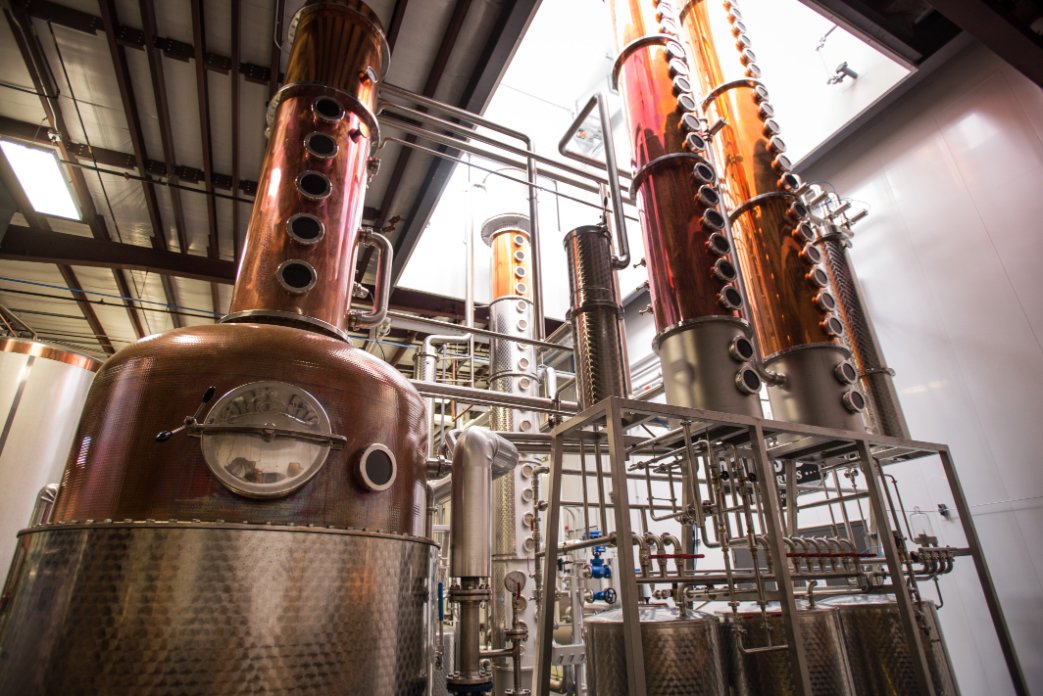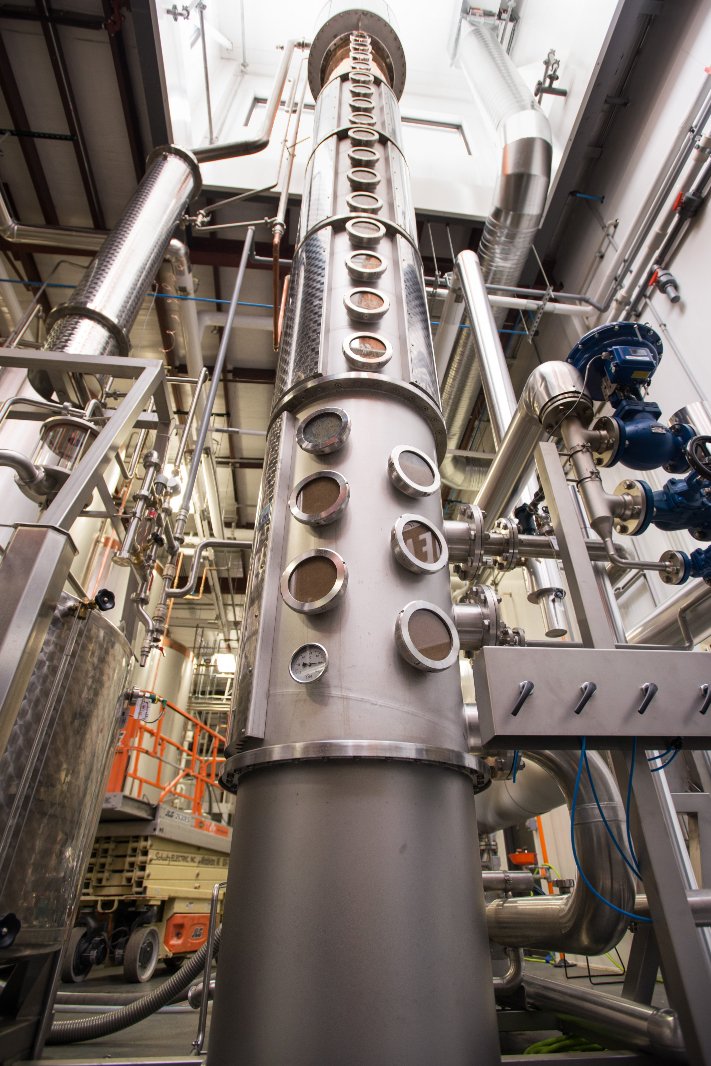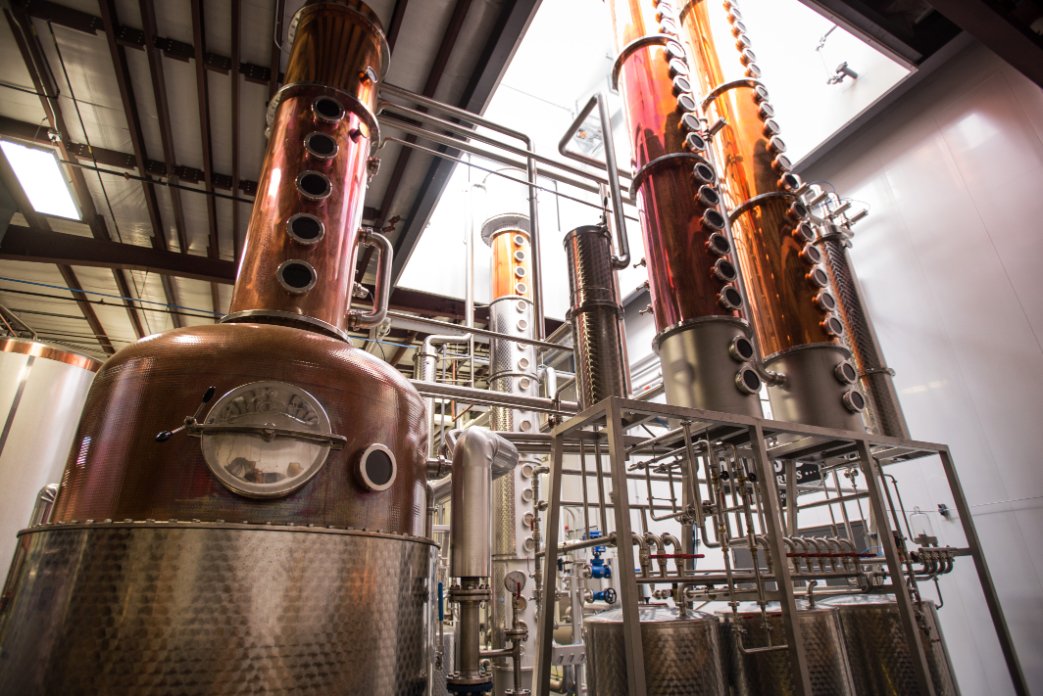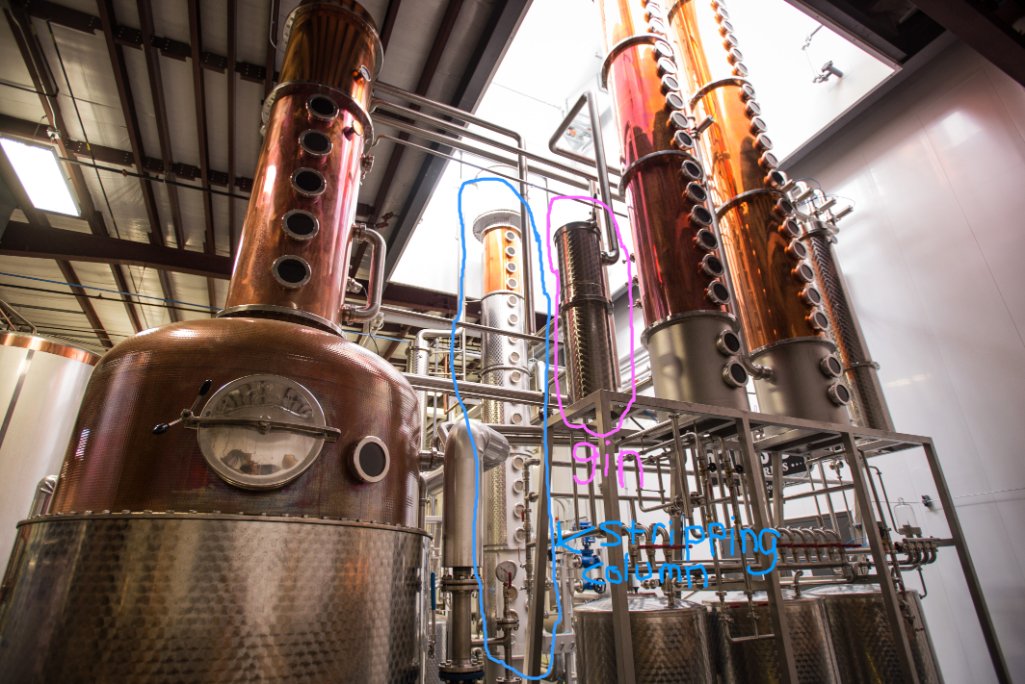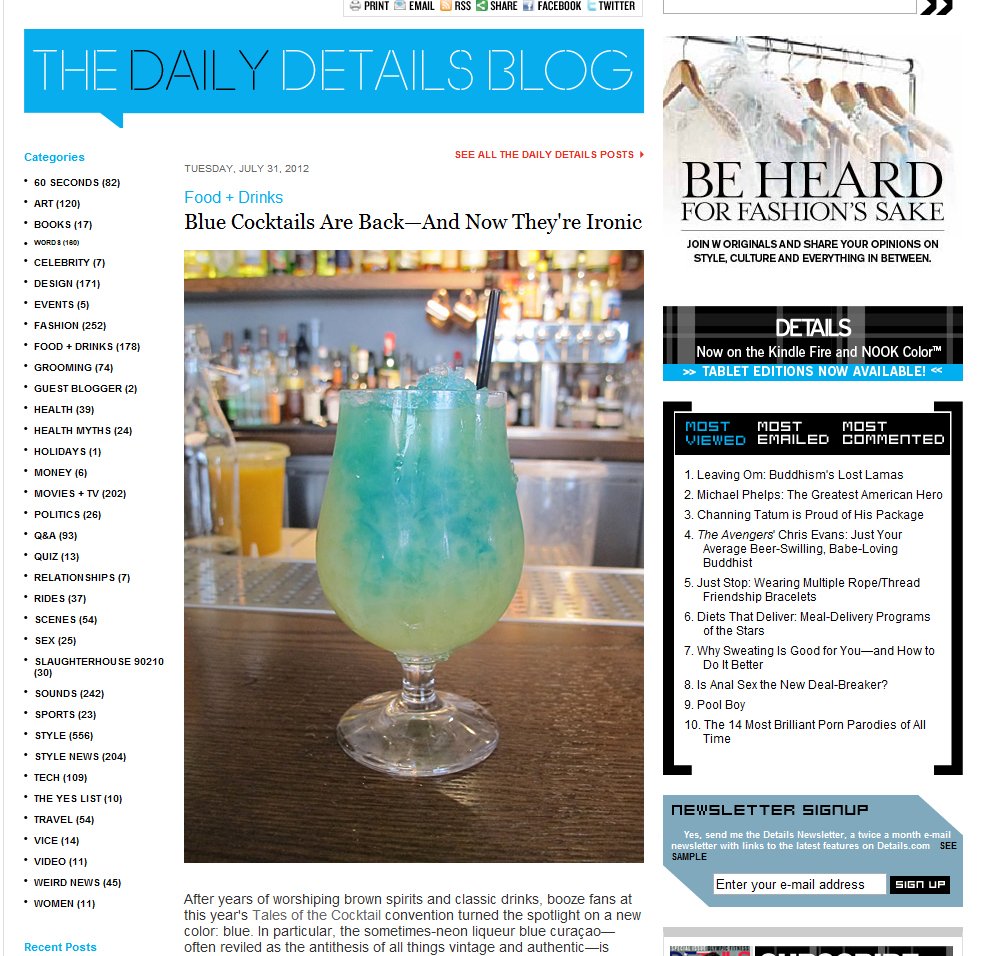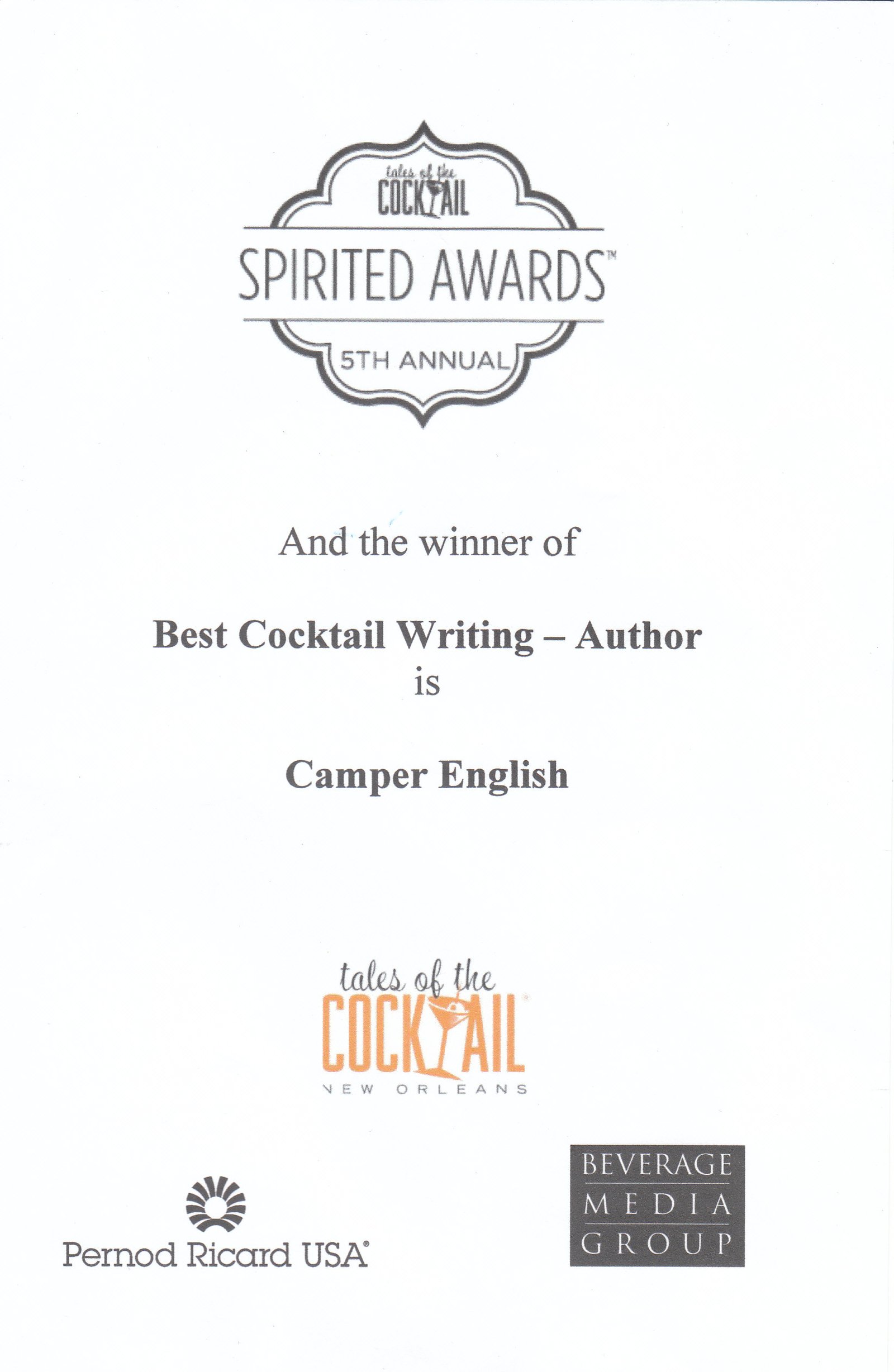At the Tales of the Cocktail convention this year, I moderated a panel with three distillers who run column stills; one 5-column rum still, one continuous bourbon still, and one pot-column hybrid.
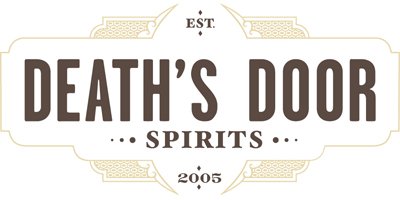 John Jeffrey is the Head Distiller for Death's Door Spirits. He makes vodka, rum, and white whiskey and will be releasing aged whiskey in the future. The below information is what I learned from John and on my visits to other distilleries.
John Jeffrey is the Head Distiller for Death's Door Spirits. He makes vodka, rum, and white whiskey and will be releasing aged whiskey in the future. The below information is what I learned from John and on my visits to other distilleries.
They run what I've been calling a pot-column hybrid still, though I'm sure there must be a better name for it. There is a pot on the bottom and then it is attached to one or several columns depending on how they configure it.
Part of the reason I proposed the seminar for Tales is that I would see these types of stills (usually in start-up or small distilleries) and dismiss them as being column stills in another form; or working just like other column stills.
However, these stills, unlike those for bourbon and rum/vodka, are not continuous stills but rather batch stills. You make a batch, then start over with a new batch; as opposed to the other stills that can run 24/7 without stopping.
In some of these stills, solids and liquids (beer with grains, fermented fruit chunks, etc) are put into the pot on the bottom. The pot separates out the solids from the liquids, as well as separates out water from alcohol. The mostly-alcohol vapors then go up through the column for rectification.
Stripping Column
At Death's Door, they don't put solids in the pot still though. They employ a separate 'stripping column', which is basically a bourbon column that separates the solids from the liquids as well as concentrates the alcohol a bit. (The column is mostly stainless steel, but as we talked about in the bourbon column post, the copper is important to have in the top of the column – you can see in the picture that the top of the stripping column is copper.)
Making Whiskey, Vodka, and Gin on One Still
This liquid alcohol then goes into the pot and is distilled. It is run through different columns depending on what product they're making. For whiskey, they don't run the alcohol over a ton of plates in several columns to remove all the flavor. However, they want to increase the amount of time the liquid spends in contact with copper in the column, so they run the vapor through one or more columns with no plates inside.
Jeffrey said that for aged whiskey, they wouldn't do this, as many of the congeners break down over time in the barrel. But as they make unaged white whiskey, they want to get rid of more of those congeners right from the start.
For gin, they do not put botanicals into the pot still, but instead pack them into a different column (circled in pink below). The alcohol alone passes through the pot and column on top of it, then the refined vapors pass through the botanical column.
In order to make vodka, they want a high-proof, clean spirit. Thus they refine the alcohol through several of the columns with lots of plates in them – over 40 plates in all. The two columns on the right are used for their vodka.
So that's what I think I know about this type of still. If you have any questions, let me know and I'll try to get them answered.
